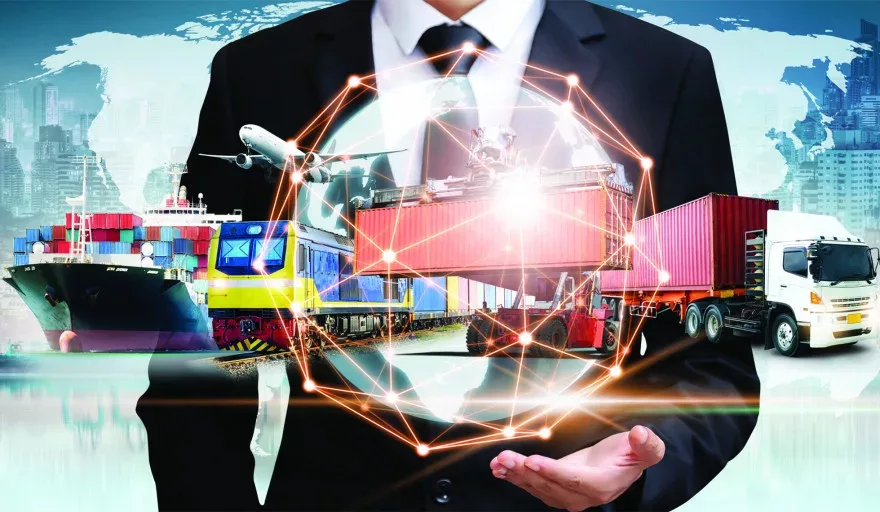With the scope of digital transformation limitless, Lionel Berthe, Head of Asia Pacific at Asendia, discusses the potential of AI in the e-commerce supply chain.
INTRODUCTION
We’ve all heard how the likes of Alibaba, JD.com and Amazon are ploughing investment into AI to enhance e-commerce search functionality, aiming to streamline the customer experience and boost sales. But what about the use of AI at the other end of the customer journey – for shipping and delivery efficiency?
Well, of course the ‘smart supply chain’ is very much on their radar too. In fact, most players involved in e-commerce shipping and fulfilment are fast discovering how to leverage the power of AI to boost retail efficiency.
Advances are certainly needed if we are going to meet escalating global demand for online shopping in a sustainable manner. The Asia-Pacific e-commerce industry is anticipated to see a CAGR of 18.5 percent during the period (2019-2025), according to Orion Market Research.
There are untold benefits that AI and machine learning can bring to transport planning and fulfilment operations. For third party logistics providers and parcel carriers, the pressure is on to help e-commerce brands find the most efficient, competitively-priced routes to customers. Here’s how AI is being deployed in the e-commerce supply chain to do so:
AI-ENHANCED CROSS-BORDER OPERATIONS
AI platforms allow companies to ingest massive amounts of historical and real-time streaming data. The application of machine learning or AI algorithms and techniques to that data will provide valuable predictions for the business. This ‘cognitive automation’ for e-commerce retailers could help them assess the viability of certain markets around the world, analyse cost models and track the shipping and delivery performance across their growing international networks. More intelligent decision-making regarding cross-border operations becomes possible.
AI-led supply chain optimisation software also amplifies important decisions by using cognitive predictions and recommendations on optimal actions. When applied to demand forecasting, AI and ML principles create highly accurate predictions of future demand by customer segment or product range. Or it could be helping to enhance overall supply chain performance, or designing more customs and border control efficiency. By constantly learning over time, the system continuously improves on these recommendations as relative conditions change.
In the cross-border logistics realm, the key supply chain technology companies provider initiating the work on the existing logistics applications with AI and machine learning are further branching into modern logistics. China and India are known to be making rapid headway in this area.
AI IN INTERNATIONAL ROUTE PLANNING
If the pandemic and the recent ‘Suez jam’ have taught us anything, it’s that unpredicted disruptions can scupper the best-laid plans to serve customers around the world. With the complex network of supply chains that exist today, it is critical for retailers and their logistics partners to get complete visibility of the entire supply value chain with minimal effort.
2021 is likely to see continued supply chain disruption even as COVID recedes. Smart postal services and couriers will need to find new ways to reach customers on behalf of their retail/e-commerce clients. For instance, in China, demand for rail freight transport has risen as a mean bypassing the sea and air shipments. Retailers need supply chain partners with the technology capabilities and agility to make fast re-routing possible.
Machine learning can help to prepare for the worst-case scenario. Having a cognitive AI-driven automated platform offers a unified data layer revealing the cause and effect, help us to eliminate bottleneck operations and focus on process improvement. The big benefit is the use of real-time data instead of redundant historical data. By implementing AI, supply chain managers can enhance their decision making by spotting abnormalities such as shipping capacity shortages and blocked transit routes – and take action before the full brunt of the problem has taken effect.
AI IN THE PICKING PROCESS AND DATA ANALYTICS
Everyone is seeking the most efficient way to operate in e-commerce, and those who dare to try the newest technologies are likely to win. Automated guided vehicles (AGVs), sometimes known as Goods to Person (GTP) robots are fast being deployed in large e-commerce fulfilment centres. Amazon can now boast over 200,000 GTP robots operating in its global fulfilment centres, while Alibaba has committed $15 billion by 2022 to expand its worldwide logistics network, with the smart warehouse model at the fore.
Data collected from these digitised workers will provide the algorithms necessary for future smart decision-making, planning for peak and operational innovations. At Asendia, we are investing in automated and robotic picking facilities in our specialist fulfilment centres for this very reason.
AI SUPPORTING ESG REPORTING
Efficiency protects the environment. By gathering data on operational performance, machine learning can begin to spot patterns of waste in fuel usage, idle time, and carbon emissions per shipment. These are likely to become essential for ESG reporting as governments around the world commit to ambitious net-zero targets.
Enhancing efficiency in logistics and delivery is a great place to start, and reputable supply chain operators do this as a matter of course. With AI-enhanced data analytics, it’s possible to track performance and drive improvements over time, allowing the greenest decisions to be made.
For logistics service providers in the APAC region, excellence in supply chain management powered by the latest advances in AI will make you stand out, and it is a smart way to serve the burgeoning e-commerce market.




































